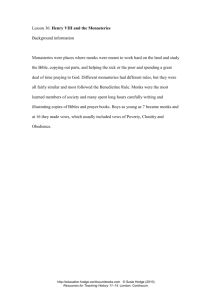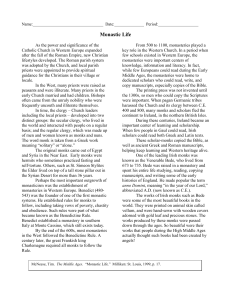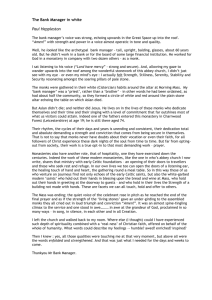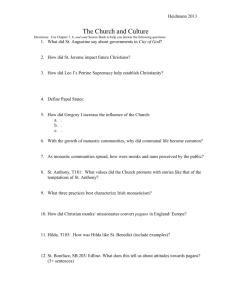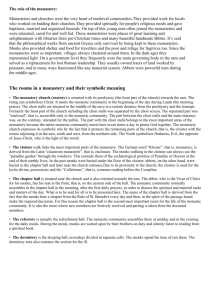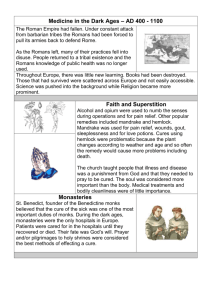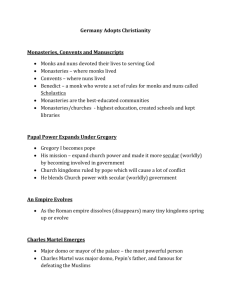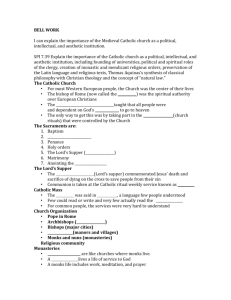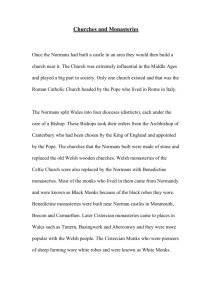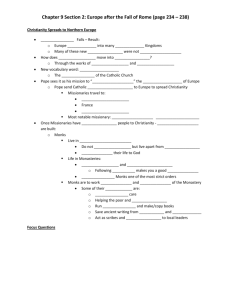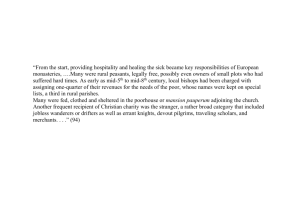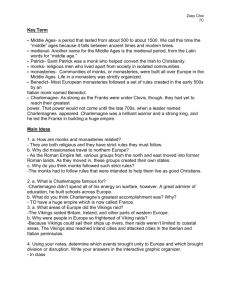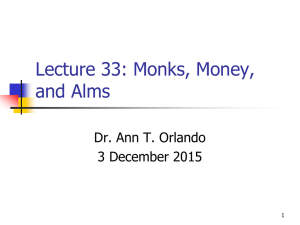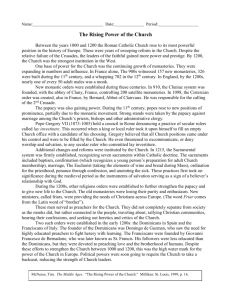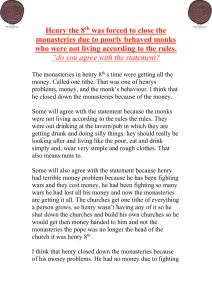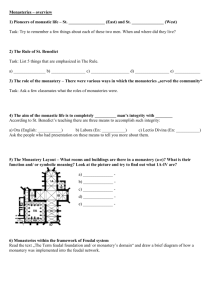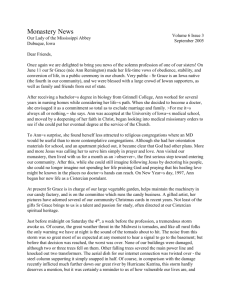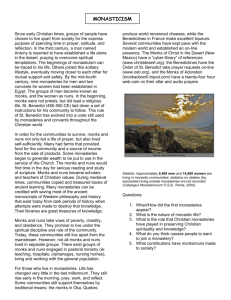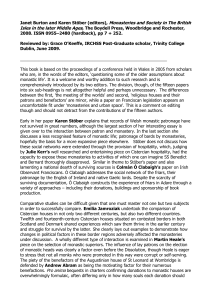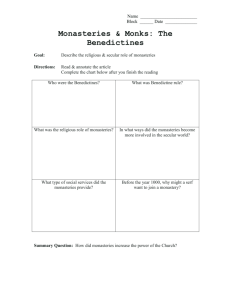Monastic Egypt
advertisement
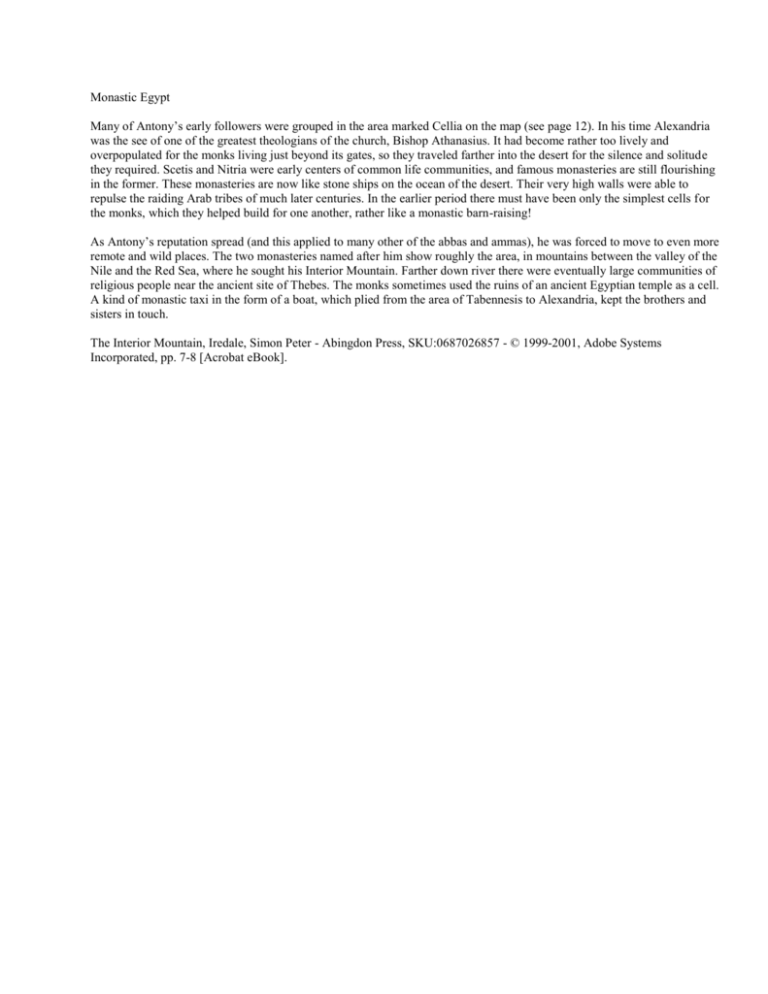
Monastic Egypt Many of Antony’s early followers were grouped in the area marked Cellia on the map (see page 12). In his time Alexandria was the see of one of the greatest theologians of the church, Bishop Athanasius. It had become rather too lively and overpopulated for the monks living just beyond its gates, so they traveled farther into the desert for the silence and solitude they required. Scetis and Nitria were early centers of common life communities, and famous monasteries are still flourishing in the former. These monasteries are now like stone ships on the ocean of the desert. Their very high walls were able to repulse the raiding Arab tribes of much later centuries. In the earlier period there must have been only the simplest cells for the monks, which they helped build for one another, rather like a monastic barn-raising! As Antony’s reputation spread (and this applied to many other of the abbas and ammas), he was forced to move to even more remote and wild places. The two monasteries named after him show roughly the area, in mountains between the valley of the Nile and the Red Sea, where he sought his Interior Mountain. Farther down river there were eventually large communities of religious people near the ancient site of Thebes. The monks sometimes used the ruins of an ancient Egyptian temple as a cell. A kind of monastic taxi in the form of a boat, which plied from the area of Tabennesis to Alexandria, kept the brothers and sisters in touch. The Interior Mountain, Iredale, Simon Peter - Abingdon Press, SKU:0687026857 - © 1999-2001, Adobe Systems Incorporated, pp. 7-8 [Acrobat eBook].
